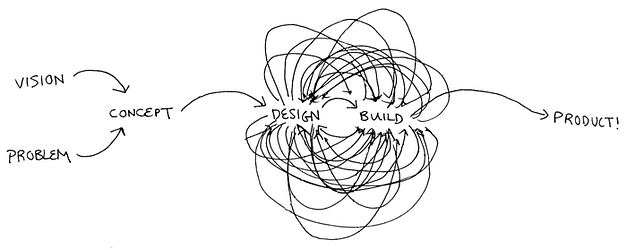Is UX/UI Design Dying After Figma AI? The Untold Story Behind the Shift
I couldn’t shake the thought.
With all the buzz around Figma’s new AI tool — capable of generating a fully-fledged UI from just a prompt — it felt like something fundamental was shifting. I was hearing the same rumblings everywhere: Is UX/UI design dying? Are designers being replaced by AI?
To get to the bottom of it, I set out to do what any good writer would: talk to the very people at the heart of the debate — product designers. My goal was to understand their fears, their hopes, and their take on this rapid evolution.
But as I dug deeper, I uncovered something unexpected. This wasn’t a story about AI replacing designers; it was about the transformation of design itself.
Talking with the Creators
My first stop was a conversation with Jamie, a seasoned product designer with decades of experience. He had seen design trends come and go, and his calm demeanor suggested he wasn’t easily rattled.
“I’ve been around long enough to see plenty of ‘game-changing’ tools come and go,” he said, gesturing at his tablet. “But Figma AI feels different. It’s smart — too smart, maybe. Sure, it can generate a UI. But it doesn’t understand the ‘why’ behind the design.”
I pressed him to elaborate. What did he mean by the ‘why’?
“AI might know how to place a button, but does it know why the button should go there? Does it understand the frustration of a user struggling to navigate a healthcare portal at 3 a.m.? That’s empathy, not data.”
Jamie’s point struck a chord. UX/UI design is more than creating layouts; it’s about solving problems for real people in real situations. AI can replicate the ‘how,’ but can it ever truly understand the ‘why’?
The Fear of Losing Craft
My next conversation was with Lila, a vibrant young designer with neon-colored hair and boundless energy. Her take was less about AI replacing jobs and more about what would be lost in the process.
“It’s not just about jobs,” she explained. “It’s about the craft. There’s something irreplaceable about the late nights of tweaking details, of iterating, and of testing. That’s where the real magic happens. Figma AI can churn out a good-looking interface in minutes, but it doesn’t struggle. And sometimes, the best ideas come from the struggle.”
Her words reminded me that design isn’t just output; it’s a process. The struggle and iteration are what give design its depth. And that’s something AI — no matter how advanced — could never replicate.
The Pragmatic View
Then there was Mark, a product manager with a no-nonsense attitude. He had a more practical view on the whole thing.
“Look, AI is a tool — just like Photoshop, Sketch, or Figma itself. Designers aren’t going anywhere. They’ll just shift from pushing pixels to creating the systems that AI operates in. Figma AI is smart, but it’s not autonomous. It still needs designers to give it purpose, context, and direction.”
Mark’s perspective opened my eyes to a bigger picture. The future of design isn’t about whether AI can replace designers; it’s about how designers will evolve. They won’t just be creating UIs anymore — they’ll be designing the very frameworks that define how AI operates.
Why Would Figma Risk Replacing Designers?
As I continued my conversations, a question kept nagging at me: Why would Figma create a tool that could potentially replace the very designers who use their platform?
The answer, I found, was simpler than I thought. Figma wasn’t trying to replace designers — they were trying to remove the roadblocks between creativity and execution. In their view, AI was a tool that could handle the repetitive tasks, allowing designers to focus on higher-level creative and strategic work.
They weren’t killing design; they were amplifying it.
The Solution: Humanize the Process
Here’s the thing: UX/UI design isn’t dying. It’s evolving.
Figma AI, or any other AI tool for that matter, doesn’t have the ability to feel empathy, understand human behavior, or craft experiences that resonate on an emotional level. It can create beautiful interfaces, but it can’t create meaningful experiences. That’s where human designers come in.
The solution to this new era isn’t to resist AI, but to embrace it. Product designers need to shift their focus from doing the labor of design to mastering the art of it. They’ll move from executing ideas to shaping them — from building interfaces to designing entire systems that integrate both human and AI input.
Designers will no longer be just the creators of UIs; they’ll be the architects of user experience, emotion, and connection. The real value in design has always been human, and that’s something no AI can replace.
What’s Next for Designers?
The future of design isn’t bleak — it’s bright. But it requires a shift in perspective. Designers won’t be replaced by AI; they’ll evolve alongside it. The role of the designer is transforming, not dying. The question is not if AI will replace designers, but how designers will adapt and redefine what design means in this new era.
So, is UX/UI design dying? No. It’s becoming more human than ever.
Originally posted Here






